Last year’s ozone hole was the smallest observed since 1988

More good news: scientists predict it will continue to shrink, although its full recovery is not expected until the middle of the century
More good news: scientists predict it will continue to shrink, although its full recovery is not expected until the middle of the century
Every September, a seasonal ozone hole in Earth’s protective ozone layer is formed over Antarctica, a phenomenon discovered in the late 1970s. Since then, its size is measured every year by satellites. As chlorofluorocarbons (CFC’s) and other man-made chemicals were blamed for the hole, their use was banned with the Montreal Protocol, signed in 1987 by 197 nations. “It's extremely rewarding, because it was originally just a scientific effort, and then we were able to convince society that it was a problem — here's what would happen if we do not deal with it,†said chemist Mario Molina, who had an integral role in the discovery of the ozone hole and who was awarded a Nobel Prize for his research in 1995.
Society’s collective efforts have begun to show results, as this year’s ozone hole was similar in size to the hole in 1988 and about 1 million miles smaller than in 2016. It reached its annual maximum on Sept. 11, covering an area about two and a half times the size of the United States – 7.6 million square miles in extent - and then declined through the remainder of September and into October. Since 1991, the average size of these ozone holes (at their yearly maximum) has been roughly 10 million square miles, with that of the year 2000 being the largest, having a width of 11.5 million square miles.
Scientists from NASA and NOAA predict the ozone hole will continue to shrink, yet this year’s improvement had more to do with weather conditions than human intervention. In fact, the reduced ozone hole extents in 2016 and 2017 were due to natural variability (warmer-than-average stratospheric weather conditions) and not a signal of rapid healing. Moreover, they believe that the current ozone hole area is still of considerable size because levels of ozone-depleting substances like chlorine and bromine remain high enough to produce significant ozone loss and its full recovery is not expected until the middle of the century.
Source: NASA
Source: NASA
Media
Want to read more like this story?
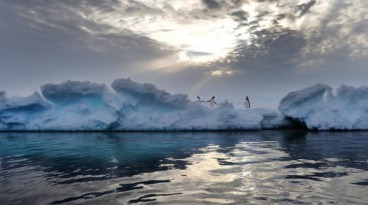
The Problem Of The Ozone Hole In Antarctica Remains
Sep, 21, 2015 | NewsOzone levels in this region are expected to recover to pre-1980 levels after 2070. Ozone levels i...
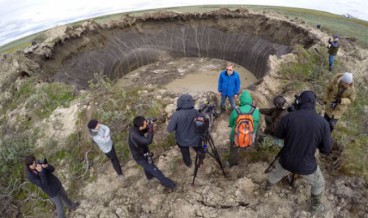
Video: Mysterious Huge Hole In Siberia Turned Into Lake
Jul, 20, 2015 | NewsHuge hole full of water appeared a few days ago in the Siberian region, which has caused much surpri...
Sinkhole outside home in Huntington Station, on Long Island: 3 fall into
Feb, 03, 2023 | NewsOn Long Island, a woman fell into a sinkhole as she was leaving her house, and two other people als...

World’s largest air purifier is undergoing testing and will soon start operating in China
Feb, 13, 2018 | NewsPreliminary results suggest it has already helped reduce smog levels in Xian Preliminary results su...
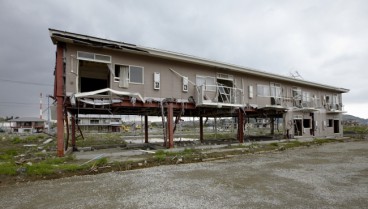
Japan 2011 earthquake continues to cause climate changes
Mar, 27, 2015 | NewsAccording to a new study, published in Geophysical Research Letters, thousands of tons of global-war...
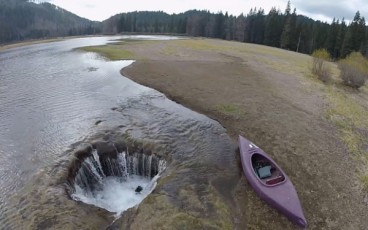
[Video]: Watch Lost Lake Disappear!
Apr, 23, 2015 | NewsWatch this video of Oregon’s aptly named Lost Lake disappear! Every spring, Lost Lake turns in...

Renewables could employ up to 24 million people by 2030
Jun, 09, 2017 | NewsLast year, the number of people working in the sector was just shy of 10 million Last year, the num...
Mexico earthquake: 'desert tsunami' 1,500 miles away in Death Valley cave
Sep, 27, 2022 | NewsAbout five minutes after the earthquake hit near Mexico's southwest coast on Monday, typically calm...
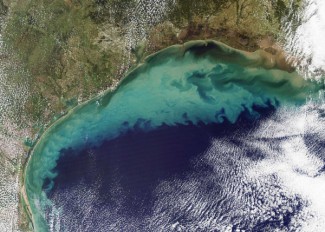
Gulf of Mexico Dead Zone predicted to remain “average” in size this year
Jun, 28, 2016 | NewsThe economic and environmental impact of the phenomenon can be felt throughout the country The ec...
Trending

Vertical gardens in Mexico City to combat pollution

Characteristics of Load Bearing Masonry Construction

Taipei 101’s impressive tuned mass damper

Saudi Park Closed After 360 Big Pendulum Ride Crashes to Ground, 23 injured

Dutch greenhouses have revolutionized modern farming

Federal court rules Biden’s offshore drilling ban unlawful


